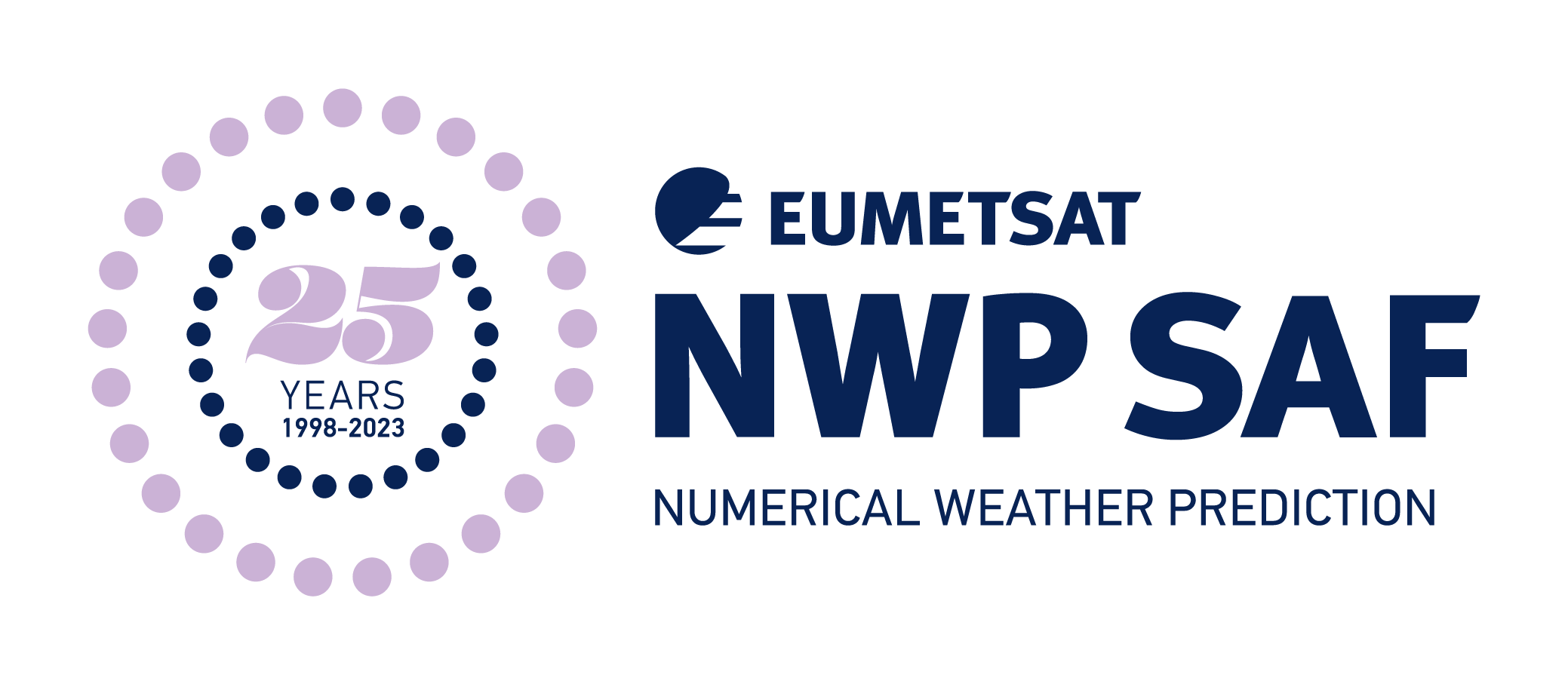Introduction
Current version: v4.0, July 2025
The NWP SAF Radiance Simulator provides a straightforward means of generating simulated radiance datasets from NWP model analysis or background fields using the NWP SAF fast radiative transfer model RTTOV without writing any code. Uses of RadSim include:
- Supporting pre-launch scientific studies and pre-operational development work for new satellite instruments.
- Studies involving comparison of observed and simulated radiances.
- Generating simulated satellite imagery.
See the RadSim downloads page for information on downloading the package and optional ancillary input data files for use with RadSim.
You should apply any bug fixes for the version of RadSim you are using as the release pacakges do not include any subsequently released updates or fixes.
Functionality
The radiance simulator performs the following functions:
Ingest of NWP model fields provided in common data formats.
This includes support for the following formats:
- GRIB data from ECMWF (including CAMS)
- NetCDF data from ECMWF
- GRIB data from the DWD ICON and ICON-ART models
- GRIB data from the HARMONIE model
- GRIB data from JMA
- Met Office fieldsfiles / PP files
- NWP SAF 60L profile dataset from ECMWF analyses
- NWP SAF 91L profile dataset from ECMWF short-range forecasts
- NWP SAF 137L profile dataset from ECMWF short-range forecasts
- NWP SAF 60L profile dataset from MACC short-range forecasts
- NWP SAF 60L profile dataset from CAMS short-range forecasts
- NWP SAF 137L profile dataset from CAMS short-range forecasts
Model fields will consist of:
- Level pressure
- Temperature
- Humidity
- Ozone
- Cloud liquid water
- Cloud ice water
- Rain
- Snow
- Cloud fraction
- Air density
- Surface wind
- Surface skin temperature
- Surface air temperature
- Surface humidity
- Sea-ice fraction
- Orography
- Land/sea mask
- Cloud liquid water effective radius
- Cloud ice water effective radius
- CAMS aerosol concentrations
- ICON-ART aerosol concentrations
Some fields are optional depending on the input data format and chosen simulation options.
Ingest of observation files, and interpolation of model fields (optional).
The user may provide observation metadata including observation locations and viewing geometry and other fields to allow simulations to be performed at those locations. Model fields are interpolated to the given observation locations and, optionally, observation times. If no observation data are provided, simulations are performed at model profile locations.
A Python script radsim_geo_obs.py is included in the package which can be used to generate observation data files for geostationary sensors for use with RadSim. Example input files for this tool are available on the RadSim downloads page.
Prepare input to, and run, radiative transfer model.
The model used in Radiance Simulator v4 is RTTOV v14. Depending on the availability of the required model fields, visible/near-infrared, infrared and microwave clear-sky, aerosol, and hydrometeor/cloud simulations can be run. All relevant RTTOV options can be specified for the simulations. Solar radiation can be included, including use of the MFASIS-NN fast visible cloud parameterisation. The land surface emissivity and BRDF atlases provided with RTTOV can be used. RadSim can optionally compute solar zenith and azimuth angles, and satellite zenith and azimuth angles for geostationary sensors.
Output simulated data to a file.
Output fields include:
- Top-of-atmosphere brightness temperatures/reflectances or radiances
- Clear-sky brightness temperatures/reflectances or radiances for hydrometeor/cloud simulations (optional)
- Input observation data
- Simulation meta-data
- Surface emissivities (optional)
- Surface BRDFs (optional)
- Jacobians for temperature, water vapour and ozone (optional)
- Jacobians for skin temperature, 10 wind u/v components, surface emissivity (optional)
- Level-to-space transmittances (optional)
- Pressure half- and full-level altitudes computed by RTTOV (optional)
- Channel height assignments consistent with those used by the NWP SAF CADS packge (optional)
- Model profiles at obs (simulation) locations (optional)
Publications
Radiance-Simulator-related Publications
Application example
Comparison of real and simulated imagery. See one of the earlier featured aricles, Simulating satellite imagery to verify NWP models for forecasting for further information about simuilated imagery. A new version has been developed that uses RadSim rather than calling RTTOV directly.
